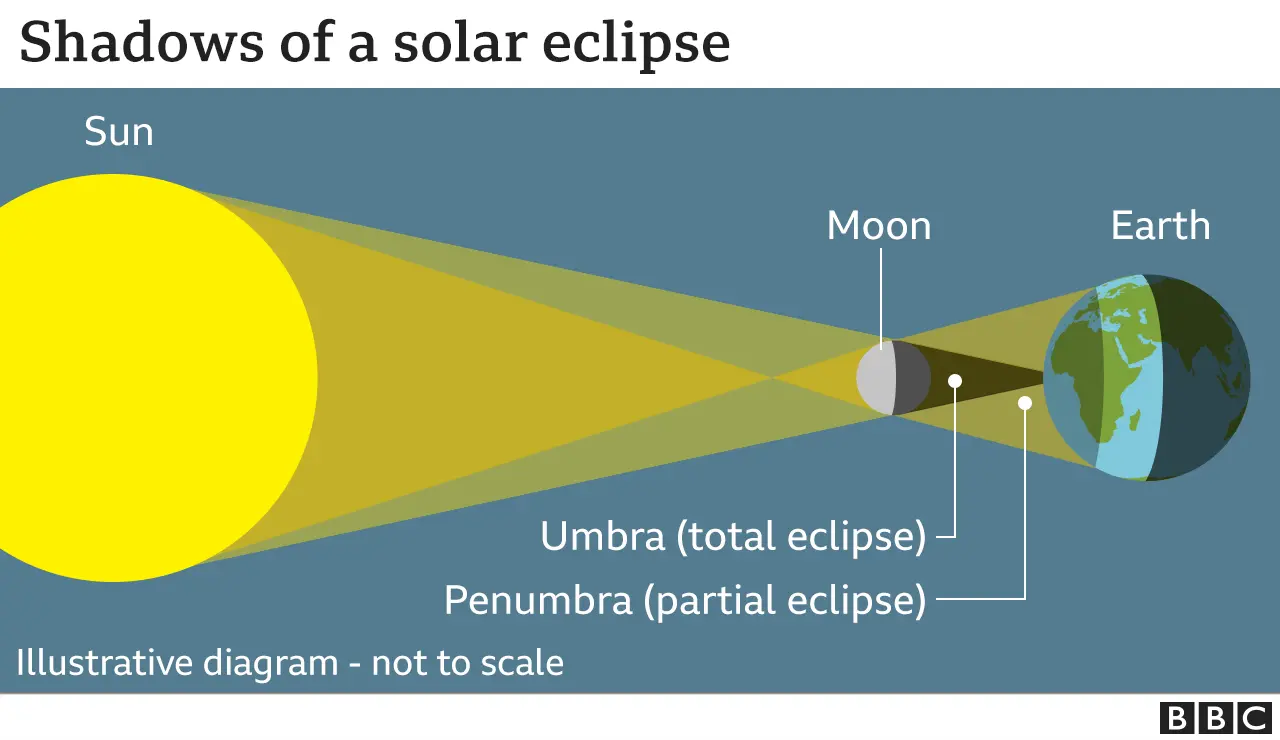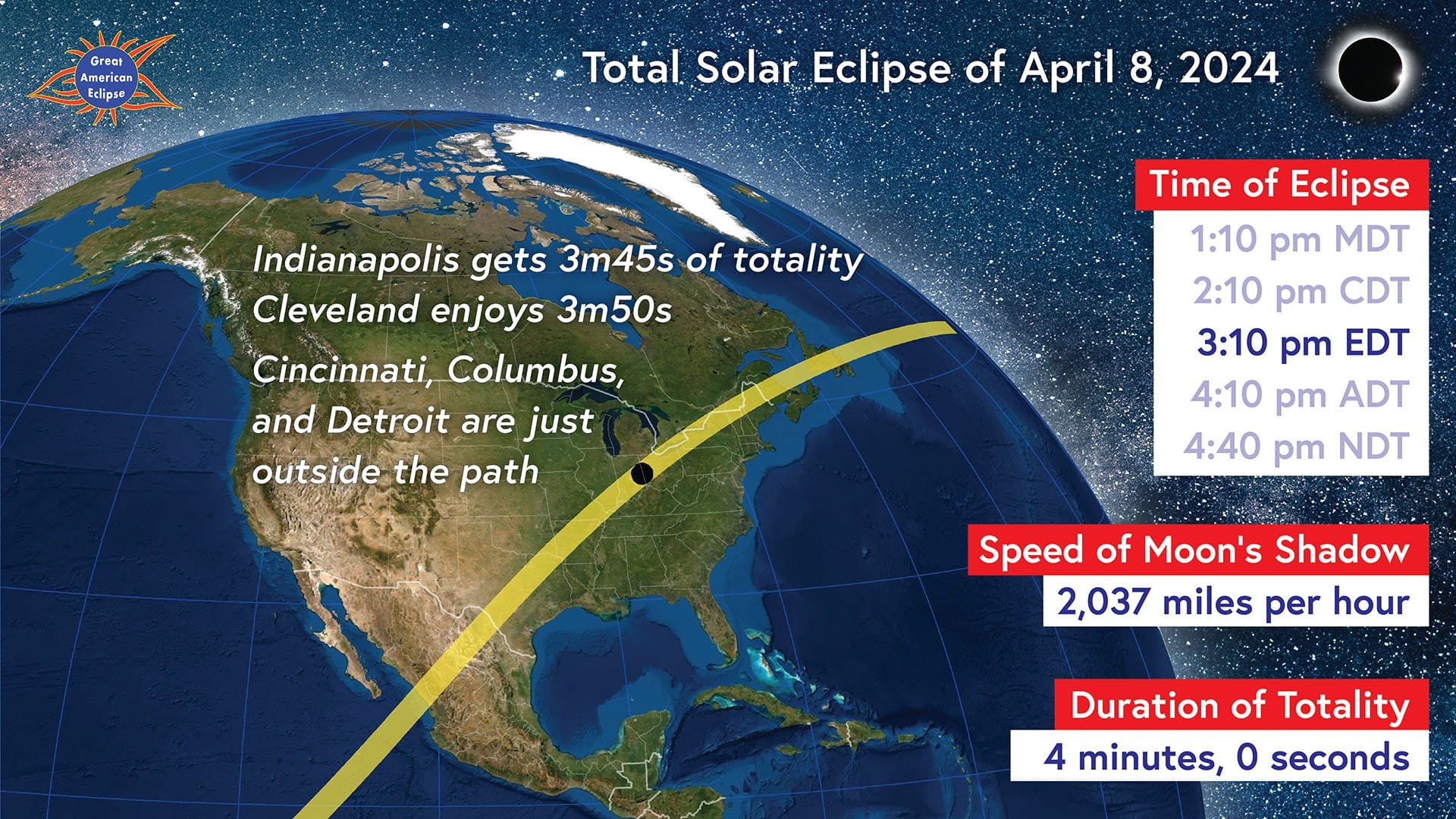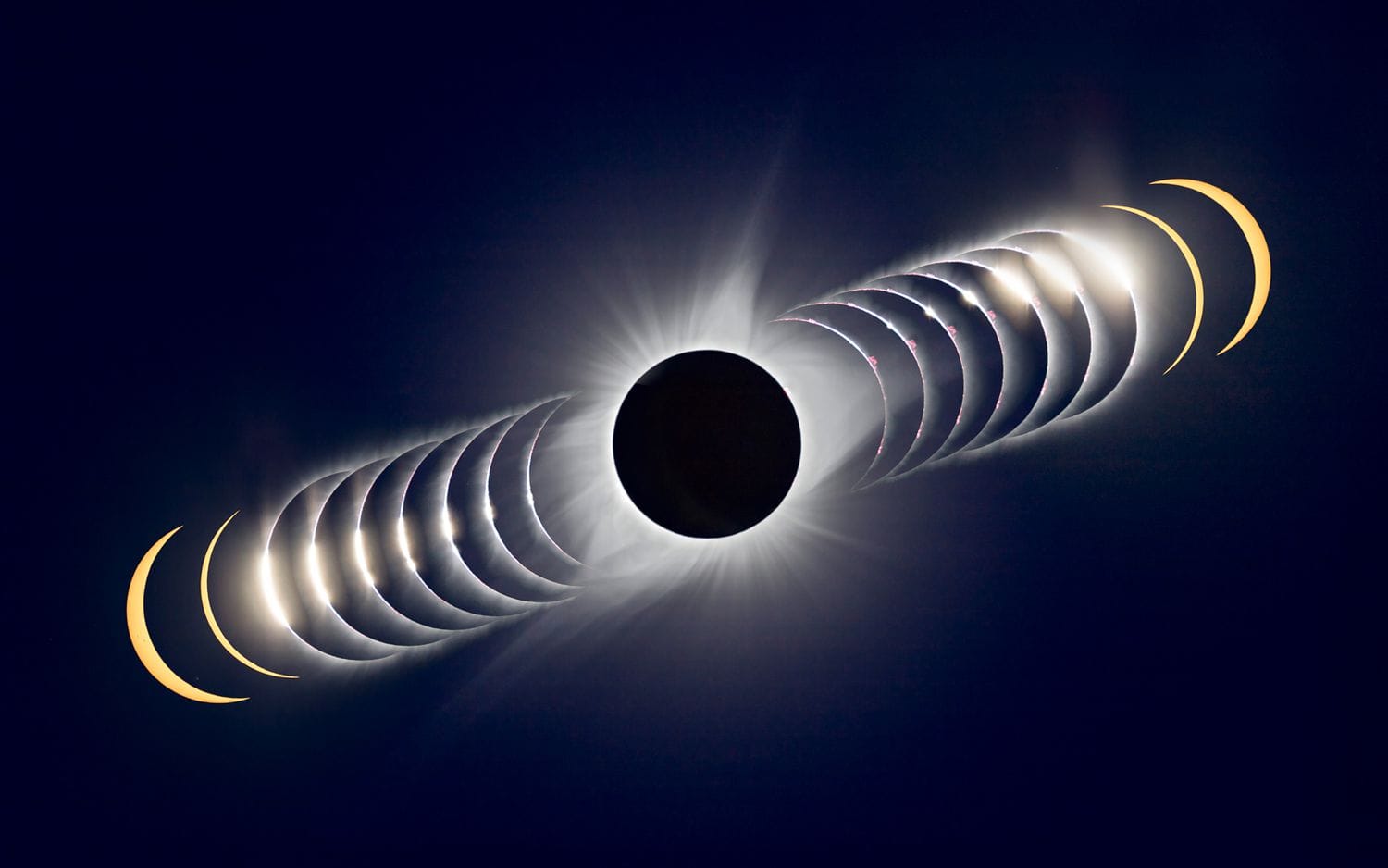North America is gearing up for an extraordinary celestial event as a total solar eclipse is poised to traverse the continent from Mexico to the easternmost tip of Canada on April 8th.
Enthusiasts are already planning hundreds of events for this rare astronomical spectacle, providing ample opportunities for observers to witness the phenomenon firsthand.
For those eager to participate, here's a comprehensive guide detailing where and how to observe the eclipse.
Solar eclipses occur when the Moon passes between the Earth and the Sun, obstructing some or all of the Sun's rays from reaching our planet. This cosmic event necessitates precise alignment among the Sun, Moon, and Earth for the Moon to cast a shadow on Earth's surface, resulting in two distinct phenomena: partial and total solar eclipses.

A partial eclipse occurs when only a portion of the Sun is obscured by the Moon, while a total eclipse, often considered the most breathtaking, transpires when the Moon completely covers the Sun, leaving only a luminous ring, or "ring of fire," visible in the sky.
While solar eclipses themselves are relatively common, with two to four occurring annually, total eclipses are infrequent occurrences due to the Earth's vast size and ocean coverage. For many, the upcoming eclipse may be a once-in-a-lifetime event, as the last total solar eclipse visible across the contiguous United States took place in 1918, with the next anticipated occurrence not until 2079.
The eclipse's timing varies depending on location, with the entire event lasting approximately two hours. In the Eastern time zone, the eclipse will begin shortly after 14:00 local time, reaching totality at different intervals as it traverses the continent. It will commence in Mazatlán, Mexico, on the Pacific coast at approximately 11:07 local time before progressing northeastward across several U.S. states and concluding in the Canadian Atlantic province of Newfoundland.

As anticipation builds for this rare celestial phenomenon, North Americans are preparing to witness a captivating display of nature's grandeur.
The duration of the total solar eclipse varies depending on your location, ranging from one minute to four and a half minutes, according to NASA. The longest duration within the United States will be in Radar Base, Texas, at 4 minutes and 27 seconds, while in Canada, Sherbrooke, Quebec, will experience the longest totality period at 3 minutes and 26 seconds.
Astronomers have meticulously mapped the path of totality, spanning 115 miles (183 km) on average, which includes major cities such as Dallas, Indianapolis, Cleveland, Buffalo, Hamilton, Montreal, and Gander. Those within this path will have the opportunity to witness the total solar eclipse, while others may experience a partial eclipse depending on their location.

However, weather conditions play a crucial role in visibility. Cloud cover can obstruct views, even within the path of totality. While forecasts may change, some areas along the path, such as Dallas and Carbondale, Illinois, anticipate partly sunny conditions, while New England and Montreal expect clear skies.
Numerous events are planned across North America to celebrate this rare phenomenon, ranging from viewing gatherings in Mazatlán, Mexico, to stadium events in Carbondale, Illinois, to coastal observations in Bonavista, Newfoundland. NASA is organizing various events, including a viewing at the Fair Park Cotton Bowl Stadium in Dallas, featuring renowned astrophysicist Neil deGrasse Tyson as a guest speaker.

In anticipation of large crowds, officials are preparing for significant attendance, with Niagara Falls expecting over one million visitors on the Canadian side alone. Prime viewing areas have been identified, including Terrapin Point and Prospect Point, offering spectators a chance to witness the eclipse alongside the iconic falls.
For those unable to witness the eclipse firsthand, live coverage will be available on the BBC website, featuring a livestream and regular updates throughout the day. Additionally, those planning to observe the eclipse in person are advised to use proper eye protection, such as solar eclipse glasses, to prevent eye damage. Alternatively, simple tools like two pieces of paper and a pushpin can be used to project the eclipse safely for viewing.



Member discussion: